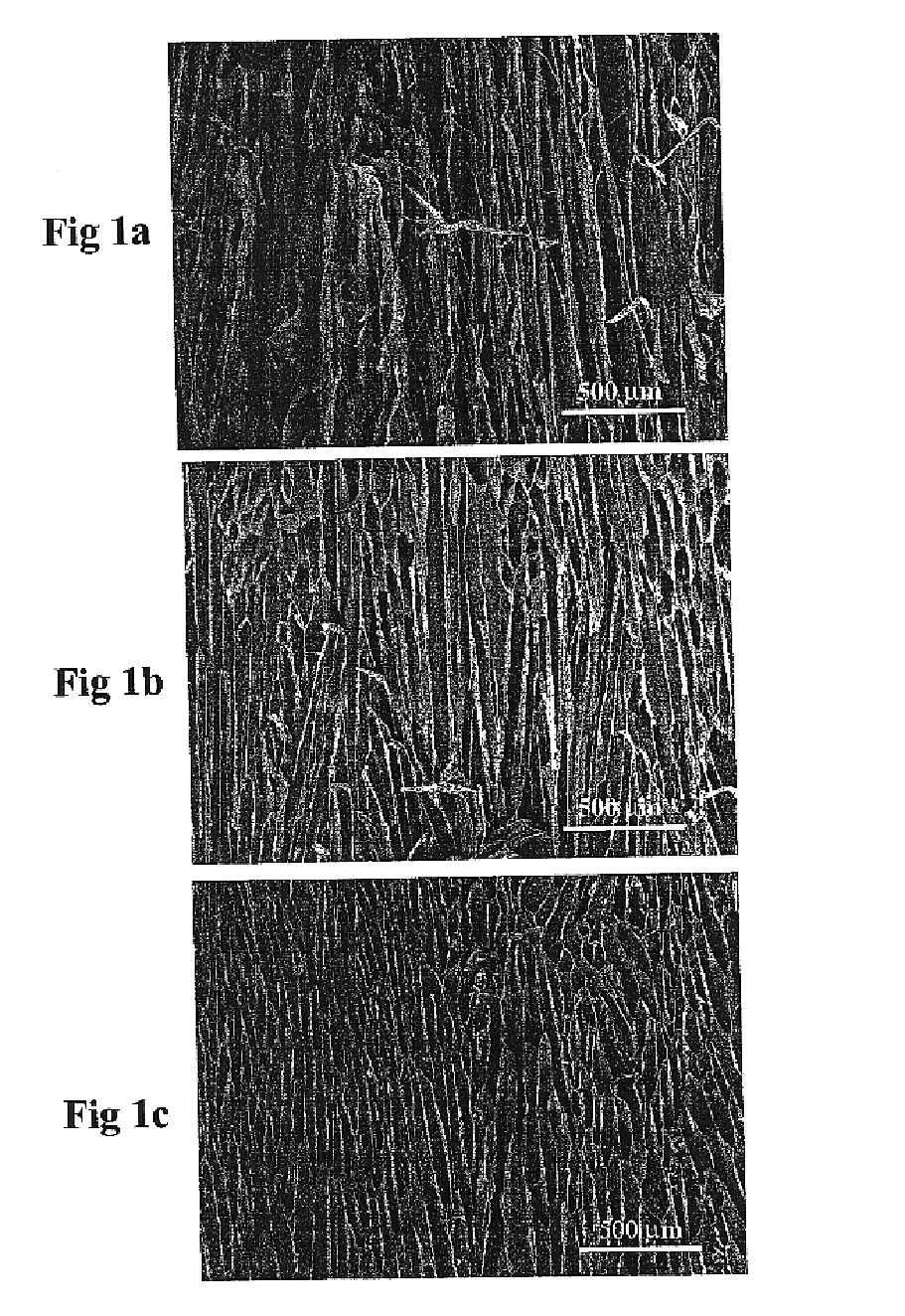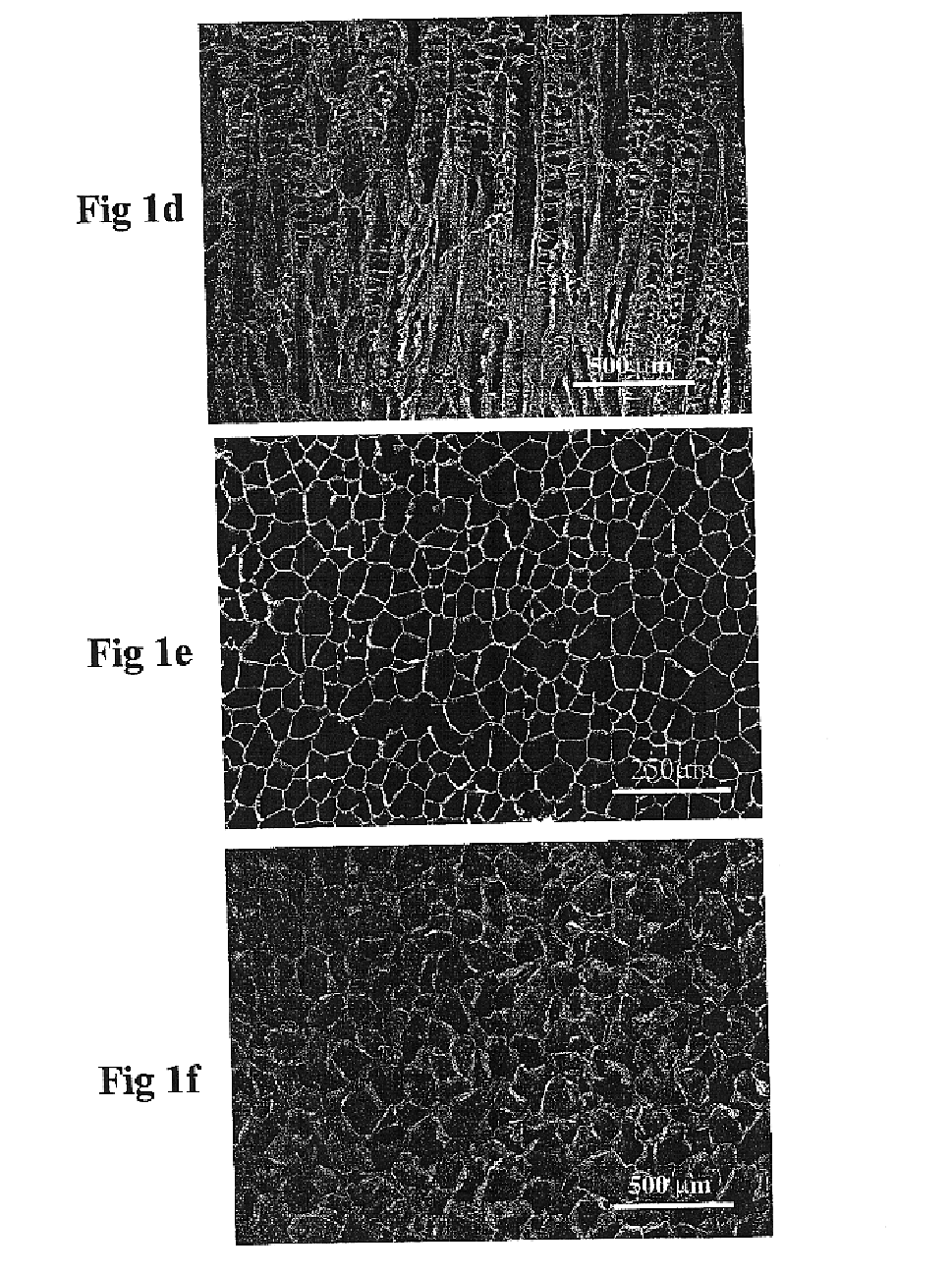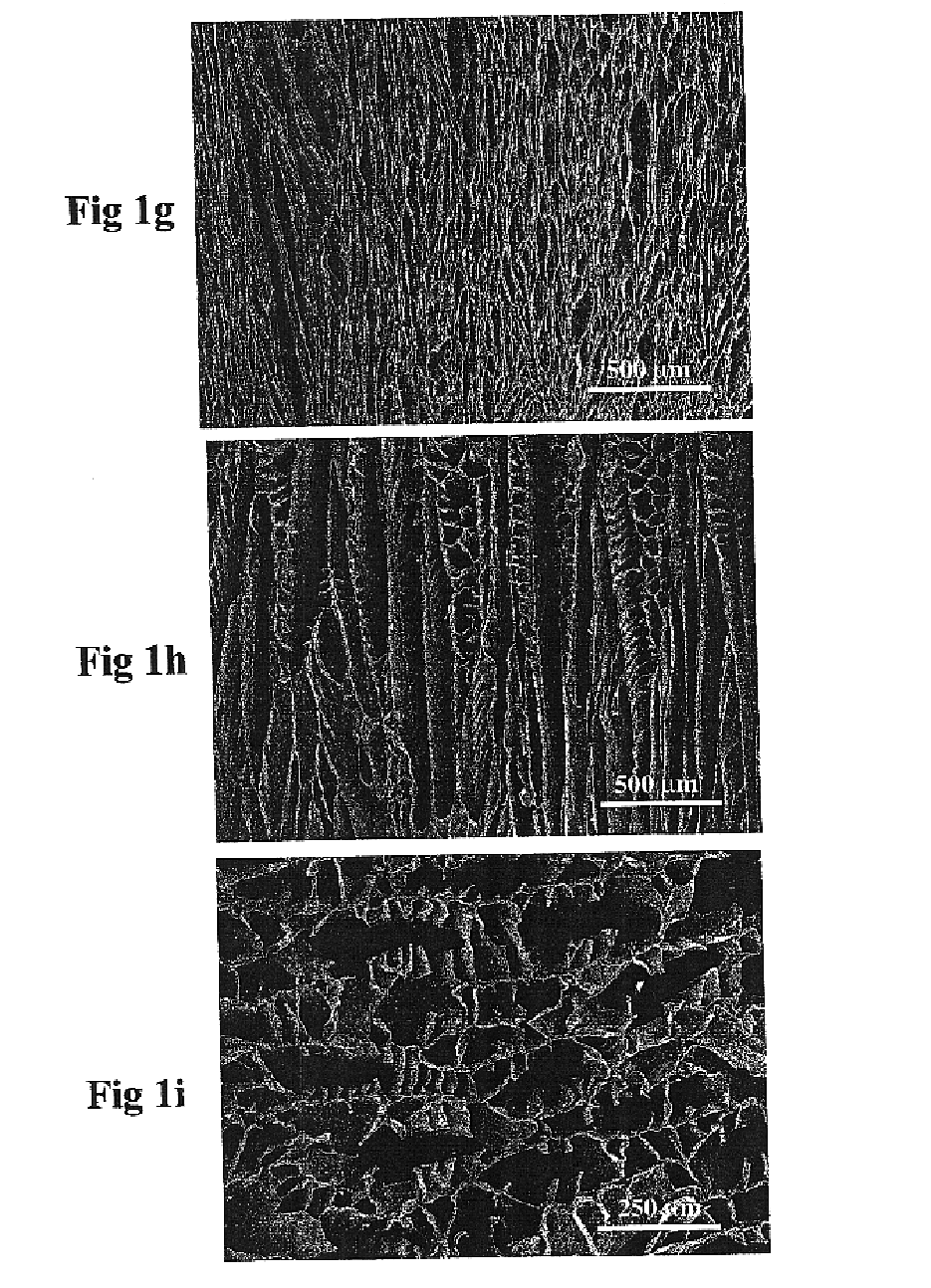Method of forming micro-tubular polymeric materials
a polymeric material and microtubular technology, applied in the direction of natural mineral layered products, prostheses, skeletal/connective tissue cells, etc., can solve the problem of challenging development of perfect vascular grafts
- Summary
- Abstract
- Description
- Claims
- Application Information
AI Technical Summary
Problems solved by technology
Method used
Image
Examples
examples
Structures of the Porous Materials or Material / Cell Constructs
[0047]The inventive compositions have parallel tubular pores with “diameters” (polygon, circular, or other geometric or non-geometric shaped cross-sections) in the size range of a few micrometers to a few hundred micrometers. The tubules can be completely open or with thin partitions in the tubules, or both types of tubules.
[0048]When cells are seeded and cultured in the porous micro tubular materials, material / cell constructs or new tissues are formed. The constructs or new tissues are usually organized into tubular or fibrillar structures at least initially.
Scaffold Fabrication
[0049]Poly(L-lactic acid) (PLLA) and poly(D,L-lactic acid-co-glycolic acid) (85 / 15) (PLGA85 / 15) with inherent viscosity of approximately 1.6 (except where indicated differently) and 1.4 were purchased from Boehringer Ingelheim (Ingelheim, Germany). Poly(D,L-lactic acid-co-glycolic acid) (75 / 25) (PLGA75 / 25) with an inherent viscosity of 0.5-0.6 was...
PUM
| Property | Measurement | Unit |
|---|---|---|
| Temperature | aaaaa | aaaaa |
| Temperature | aaaaa | aaaaa |
| Temperature | aaaaa | aaaaa |
Abstract
Description
Claims
Application Information
 Login to View More
Login to View More - R&D
- Intellectual Property
- Life Sciences
- Materials
- Tech Scout
- Unparalleled Data Quality
- Higher Quality Content
- 60% Fewer Hallucinations
Browse by: Latest US Patents, China's latest patents, Technical Efficacy Thesaurus, Application Domain, Technology Topic, Popular Technical Reports.
© 2025 PatSnap. All rights reserved.Legal|Privacy policy|Modern Slavery Act Transparency Statement|Sitemap|About US| Contact US: help@patsnap.com



